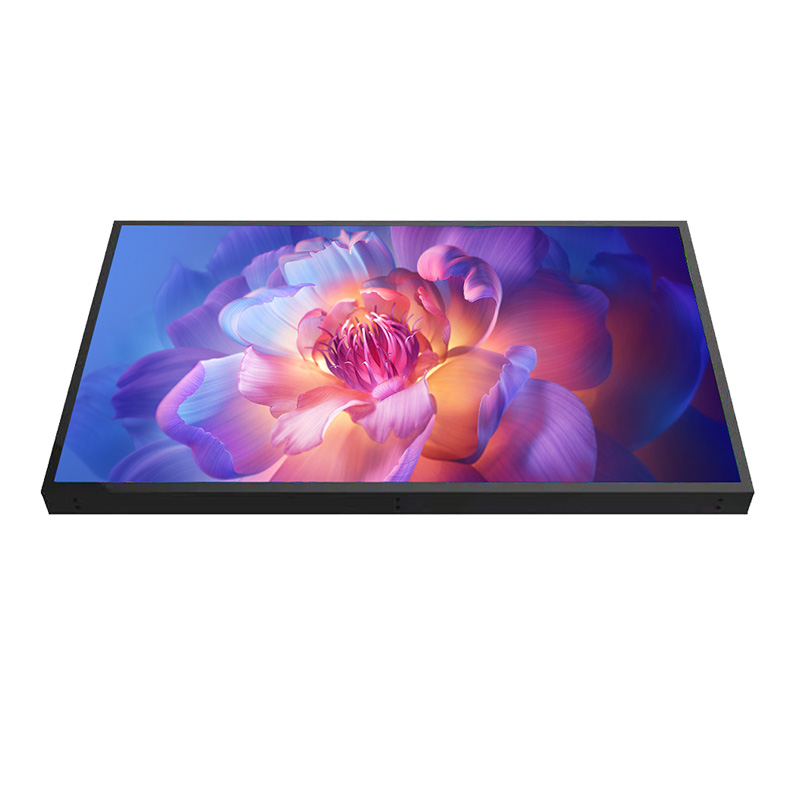
49 inch touch open frame display with 3000 nits high brightness
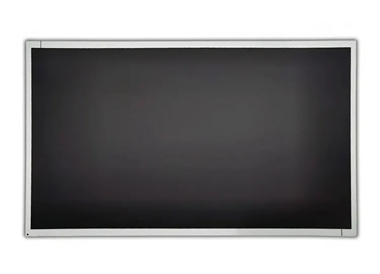
P215HAN02.0 AUO 21.5 inch hi-tni tft LCD with 2500 nits brightness

55 inch 2000 nits high brightness window facing display
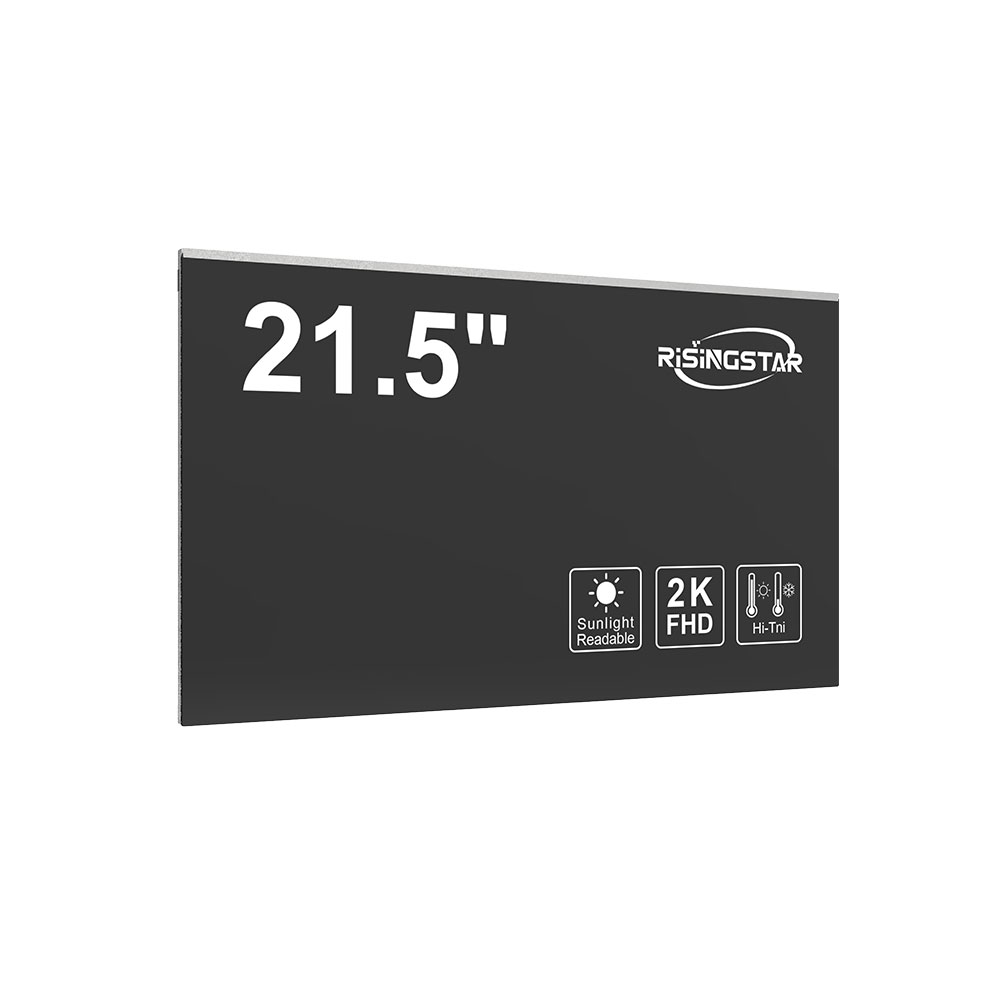
RS215FHM-ND10 21.5 inch high brightness LCD screen readable in sunlight

32 inch AUO QLED 4K high brightness window facing display
When a standard LCD turns into a dark mirror under the sun, a high brightness display stays clear, vivid and fully readable. For outdoor kiosks, EV charging stations, fuel dispensers, transportation systems and digital signage, choosing the right high brightness LCD is critical for safety, user experience and brand visibility.
As an industrial display manufacturer, RisingStar specializes in high brightness LCD displays up to 5000 nits, designed for 24/7 operation in harsh outdoor environments. This page gives you a complete, engineering-level overview of what high brightness displays are, why they matter, how to select the right brightness, and how RisingStar helps global OEMs and system integrators succeed in real projects.
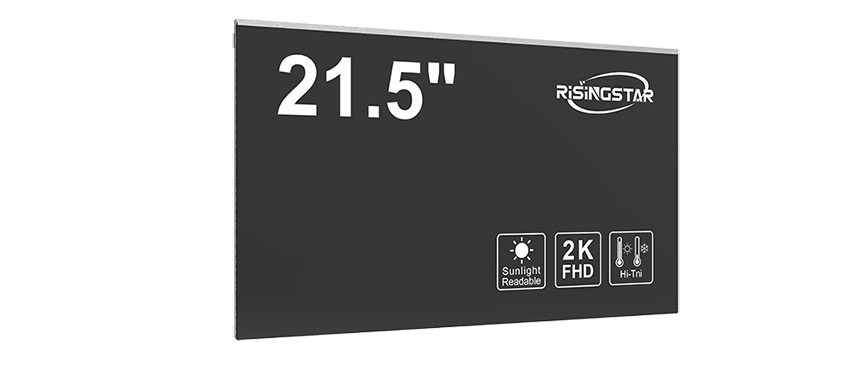
A high brightness display is an LCD designed to deliver significantly higher luminance than standard consumer screens. While office monitors or consumer TVs typically offer 250–400 nits, a high brightness LCD starts around 1000 nits and can go up to 3000–5000 nits or higher.
Brightness unit: 1 nit = 1 cd/m² (candela per square meter)
Standard LCD: ~300 nits
Sunlight readable display: typically ≥1000 nits
Outdoor high brightness display: 2500–5000 nits depending on environment
The goal is simple:
Even in direct sunlight or strong ambient light, the screen must remain readable, accurate and safe to operate.
In real outdoor deployments, the problem is not just “the screen is too dark”. It is a combination of:
Strong ambient light and direct sunlight
Reflections on the glass
Temperature rise inside the enclosure
Long-term UV exposure
Safety and usability requirements
True sunlight readability
A 300-nit panel in full sun becomes washed out. A 2500–5000 nits sunlight readable display maintains contrast and legibility so users can see critical information at a glance.
Safety and compliance
In public transport, EV charging, and industrial control, operators must be able to read messages and warnings under all conditions. High brightness LCDs support safety and regulatory requirements.
Brand image & content impact
Outdoor digital signage, real estate totems and retail window displays need vibrant images and clear text even at midday. High brightness ensures your advertising and brand visuals remain effective.
24/7 reliability
Industrial-grade high brightness displays are designed for continuous operation, with special attention to thermal design, backlight lifetime and panel protection.

Choosing the right brightness is not guesswork. It must be matched to ambient conditions and viewing distance.
Typical brightness levels:
1000–1500 nits
Suitable for semi-outdoor or high ambient indoor locations (e.g. behind glass, shop windows without direct sun).
2000–2500 nits
Good balance for many outdoor kiosks with partial sun exposure.
3000–4000 nits
Recommended for full outdoor applications in bright regions, especially when users stand close to the screen.
5000 nits
For extreme sunlight conditions, high reflectance environments, or when you need maximum impact and readability at a distance.
RisingStar provides a full brightness range including 2500, 3000, 4000 and 5000 nits, so OEMs can choose exactly the level needed for their project instead of over- or under-specifying.
A high brightness LCD display is not just a “stronger backlight”. It is an integrated design of panel, backlight, optics and mechanics.
Key differences:
Enhanced LED backlight system
High-efficiency industrial LEDs
Optimized light guide and diffuser design
Support for up to 5000 nits with controlled power consumption
Long backlight life (typical 50,000 hours or more)
Sunlight readable contrast
To be truly sunlight readable, it’s not only brightness but also contrast that matters. RisingStar focuses on high contrast ratio combined with high luminance to keep text and graphics sharp.
Thermal design & low power consumption
High brightness usually means more heat. RisingStar designs low power, low heat solutions using efficient backlight drivers and aluminium structures for better heat dissipation.
LCD blackening defect protection
Standard consumer LCDs may suffer from blackening when exposed to high temperatures and sunlight. Industrial-grade panels and careful thermal engineering help avoid these defects.
Wide operating temperature
For outdoor use, high brightness displays must work in wide temperature ranges, e.g. -20°C to +70°C (or even wider depending on model), without damage or performance loss.
RisingStar high brightness LCD displays are widely used in transportation, energy infrastructure, smart city projects and commercial signage. Typical application areas include:
Railway and metro station platforms
Bus stops and BRT systems
Intercity rail passenger information systems
High brightness passenger information displays show schedules, delays, service updates and safety messages which must be readable at all times and under all weather conditions.
As EV adoption grows, roadside EV chargers are becoming intelligent terminals. A high brightness display:
Guides users through charging steps
Shows tariffs and payment info
Displays brand and promotional content
Remains readable in direct sunlight and at night
In petrol stations, high brightness LCDs are integrated into fuel dispensers and canopy signage:
Price information & fuel type guidance
Safety warnings
Promotional videos while refuelling
Street totems & advertising kiosks
Real estate digital signage
Retail storefront window displays
Smart city information boards
These applications demand vivid content and high contrast in direct sunlight, often with portrait orientation and custom mechanical integration.
High brightness outdoor displays are also used in:
Hotel terraces & pool areas
Stadiums and arenas
Theme parks and leisure venues
to provide outdoor TV experience that is still visible during daytime.
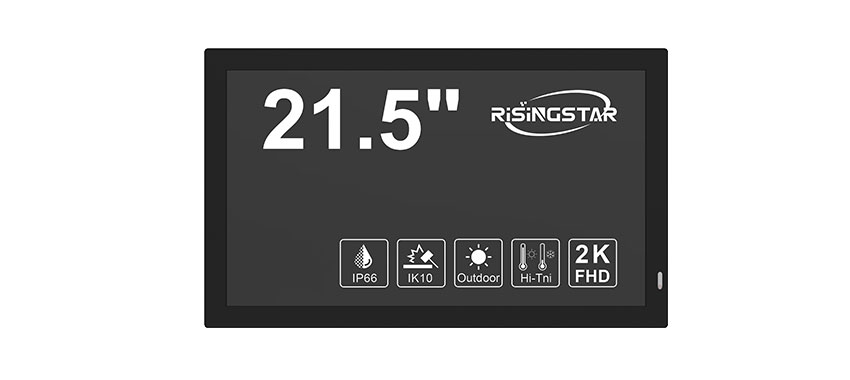
RisingStar designs and manufactures industrial-level high brightness LCD displays specifically for demanding outdoor and semi-outdoor environments. Key features include:
Available brightness levels: 2500 / 3000 / 4000 / 5000 nits
Direct-type LED backlight for stable, uniform luminance
Enhanced optical design for better light utilization and lower power consumption
Professional TFT LCD panels optimized for high brightness use
Long-life LED backlight with MTBF around 50,000 hours
Industrial-grade power boards and drivers
24/7 operation capability
Despite high luminance, RisingStar emphasizes energy-efficient designs:
Advanced LED driver technology
Optimized backlight control
Thermal simulation and design for reduced panel temperature
This reduces total cost of ownership and enhances system reliability.
Aluminium housing / frames for better heat dissipation and weight reduction
Easy integration into enclosures, kiosks, charging stations or vehicle-mounted systems
Slim structure suitable for compact designs and modern aesthetics
To ensure stable performance in harsh outdoor conditions, RisingStar high brightness displays undergo:
Wide operating temperature tests (e.g. -20°C ~ +70°C, model dependent)
High/low temperature cycling
24/7 burn-in tests
Vibration and environmental tests as required by project
RisingStar offers a wide size range of high brightness LCD displays, typically from small panels for instrument and EV chargers to large-format signage displays for public information and DOOH.
Customization options may include:
Different brightness levels
Touch screen integration
Optical bonding and anti-reflective coating
Custom mechanical design
Open frame monitor or fully enclosed solution
When selecting a high brightness display for your project, engineers and product managers should consider:
Environment & sunlight conditions
Direct, indirect or reflected sunlight?
Average and peak ambient brightness?
Region and climate?
Viewing distance & angle
Close interaction at 0.5–1 m (e.g. chargers, kiosks)
Longer viewing distance for signage or passenger information
Thermal management
Is there active cooling in the enclosure?
Is the installation in a hot climate or behind glass?
Power budget
Available power for the display system
Need for dimming at night to reduce power and light pollution
Certification & safety
Transportation, industrial or EMC requirements
Specific regulations in rail, EV or oil & gas sectors
RisingStar’s engineering team supports OEMs and system integrators in selecting the right brightness, panel size and structure for each application.
Whether you are building a new EV charging network, modern petrol station, smart bus stop, or outdoor signage network, RisingStar can act as your display technology partner, not just a component supplier.
High brightness LCD modules for direct integration
Open frame high brightness monitors for kiosks and cabinets
Outdoor-ready display assemblies with mechanical customization
Engineering support on:
Brightness selection and optical design
Mechanical integration & thermal design
Long-term reliability considerations
With industrial-grade quality, high contrast, up to 5000 nits brightness, low power consumption and 50,000-hour backlight life, RisingStar high brightness displays are designed to keep your content readable and reliable in the most demanding applications.
Q1: What brightness is considered “sunlight readable”?
Typically, a display above 1000 nits is considered sunlight readable, but for full outdoor use, 2500–5000 nits is recommended depending on installation and environment.
Q2: Does higher brightness always mean better?
Not always. Very high brightness increases power and heat. The best solution is an optimized brightness level matched to the environment, with proper cooling and dimming control.
Q3: Are high brightness displays suitable for 24/7 operation?
Industrial high brightness LCDs from RisingStar are designed for continuous 24/7 use, with robust backlight systems and thermal design.
Q4: Can RisingStar customize high brightness display sizes and structures?
Yes. Depending on project volume, RisingStar offers custom brightness, mechanical design, open frame structures, touch integration and more.
Q5: What is the typical lifetime of a high brightness display?
Backlight lifetime is typically around 50,000 hours, depending on brightness level and operating environment. With proper design, many projects run reliably for several years of continuous operation.
If you are planning or upgrading:
Passenger information systems
Outdoor digital signage
EV charging stations
Fuel dispensers
Smart city kiosks
Outdoor TVs or hospitality displays
RisingStar can provide complete high brightness LCD display solutions tailored to your environment, design and budget.
Tell us your project requirements:
Required size and brightness (nits)
Operating environment and temperature
Installation type (kiosk, charger, totem, vehicle, etc.)
Annual volume and certification needs
Our engineering and sales teams will propose a reliable, cost-effective and future-proof high brightness display solution.





Ask a quote for the latest price and one of our team members will respond as soon as possible.
